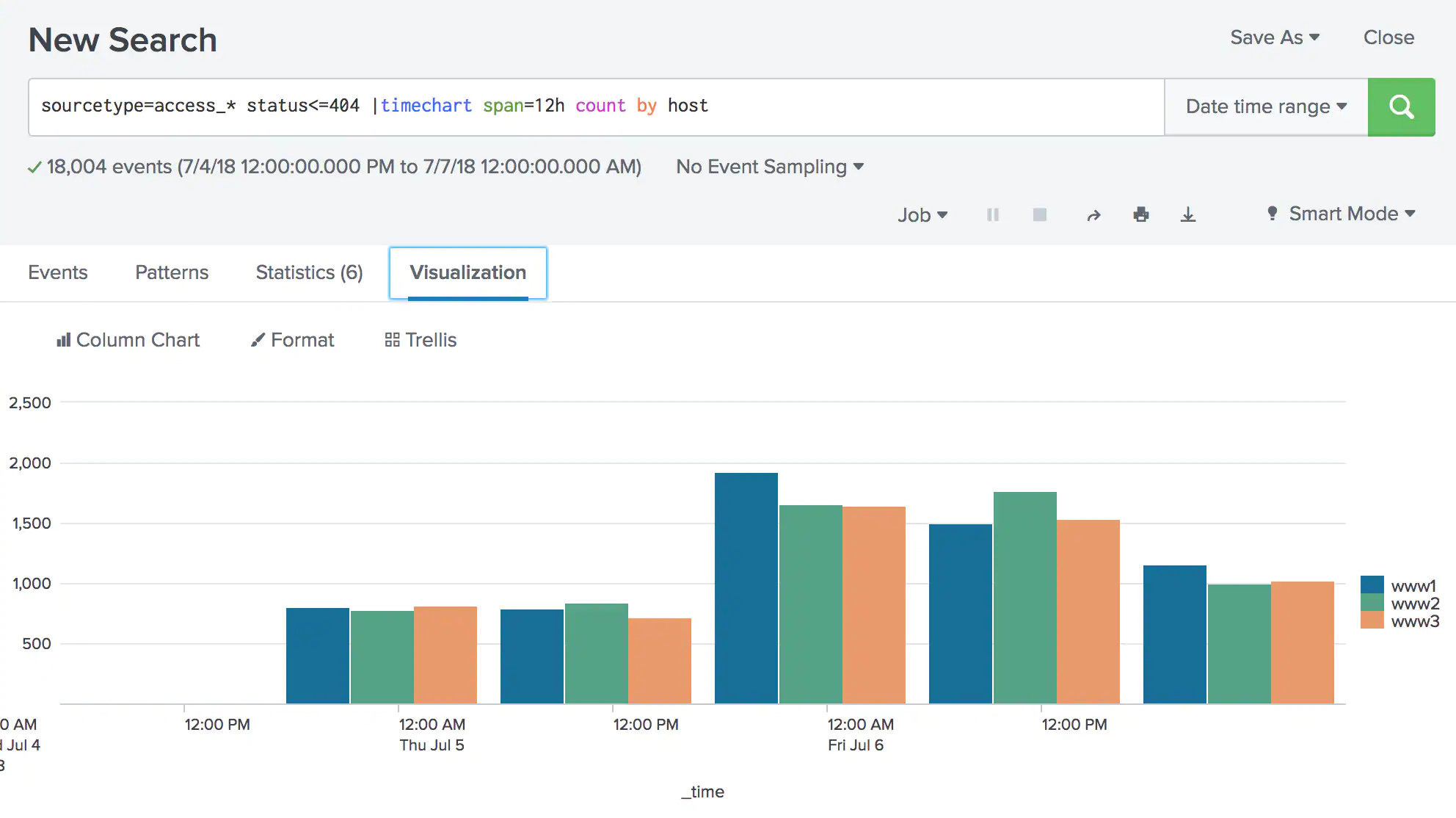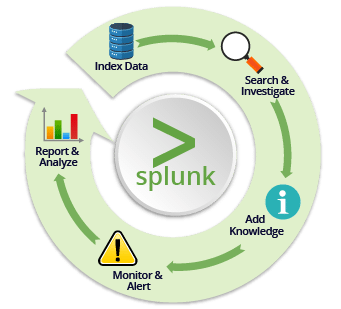
- timechart [sep=] [format=] [partial=] [cont=] [limit=] [agg=] [… ] ( ( [BY ] ) | () BY )
- Syntax: | | | |
- Syntax: count | ()
- Syntax: ()… []
What is a Splunk Timechart?
The utilization of Splunk timechart order is explicitly to create the rundown insights table. This table that is produced out of the order execution, can then be arranged in the way that is appropriate for the prerequisite – graph representation for instance.

Kindly investigate the punctuation of timechart order that is given by the Splunk programming itself:
Allow us now to investigate the necessary contentions that you explicitly need to give to the order without which you probably won’t have the option to get the subtleties that you plan to. To utilize either or , is compulsorily needed to be given. Allow us to investigate every single imaginable expected contention to the order.
eval-expression
This can be best depicted as a mix of literals, fields, administrators, and capacities that might address the worth of your objective field. For any of these assessments to assess according to your prerequisite, the qualities are explicitly should have been legitimate for the sort of activity that we will perform on them. To clarify this, assuming you are attempting to perform expansion or increase of two factors where the contributions to these are not numeric in nature, this won’t give the outcome that you hope to be assessed.
single-agg
This can be best depicted as a solitary total that can be applied to a particular field, including an assessed field. There is no opportunities for trump cards to be utilized. The field should be indicated in every case except as an exemption, when utilizing the count aggregator this can be alternatively left finished.
split-by-provision
This indicates a field to be parted. Assuming the gave field is a mathematical field, then, at that point, the default discretization is applied to it (which is characterized by the tc-choices). You can alternatively utilize the to determine the necessary number of sections to be incorporated.
There are a differed scope of discretionary boundaries that can be utilized with timechart order, however we won’t be going through all of them to save time. Allow us to investigate a portion of the significant however discretionary boundaries in the Examples area, so we can comprehend the utilization of these boundaries assuming not they can be securely skipped.
- index=_internal “group=thruput” | timechart avg(instantaneous_eps) by processor
- …|timechart span=10m eval(avg(CPU) * avg(MEM)) BY have
- … | timechart eval(round(avg(cpu_seconds),4)) BY processor
- …| timechart span=1m avg(CPU) BY have
- …| timechart avg(cpu_seconds) BY have | anomaly action=tf
- …| timechart span=10m avg(thruput) BY have
- sshd fizzled OR disappointment | timechart span=10m count(eventtype) BY source_ip usenull=f WHERE count>25
Splunk Timechart Examples :-
Allow us to take a gander at a Example with Splunk Timechart
Allow us now to take a gander at the hypothesis that we have quite recently examined in the part above as specific illustrations and allow us to comprehend the quick and dirty subtleties that we may have missed investigating before.

Example 1:
The report utilizes the inner Splunk log information to break down and envision the normal ordering throughput (ordering kbps) of Splunk processes throughout a delayed term of time. The data is then parted by the processor as, for example, showed beneath:
Example 2:
This Example shows us a graph that gives the augmentation of the normal CPU and the normal MEM for every one of the host that is associated. For like clockwork, figure the result of the normal CPU and normal MEM for each host.
Example 3:
This Example will give you an outline of the normal of cpu_seconds given by your processor which is then adjusted to 4 decimal spots according to the language structure gave in the Example beneath.
Example 4:
This Example will take the normal worth of the CPU usage for each single moment for each host accessible and gives a lovely outline the portrayal of normal CPU for each host.
Example 5:
This Example will compute the normal of cpu_seconds by each conceivable host accessible and afterward eliminates the remote qualities that might contort the time-graph pivot of the outline created.
Example 6:
This Example will detail out on the normal throughput of the relative multitude of hosts accessible throughout longer spans of time in a decent outline with normal of throughput against has over the long haul.
Example 7:
This Example subtleties out the counts of occasion types that are distinguished by source_ip field where the count assessed is more prominent than 25 in a diagram.

Conclusion :-
Splunk Timechart refers to visualization of any data with respect to time. In Timechart, data is represented in the form of line, area or column charts which is plotted against x-axis that is always a time field, whereas y-axis is the variable field. Splunk Timechart is often compared to Stats and Chart commands.





